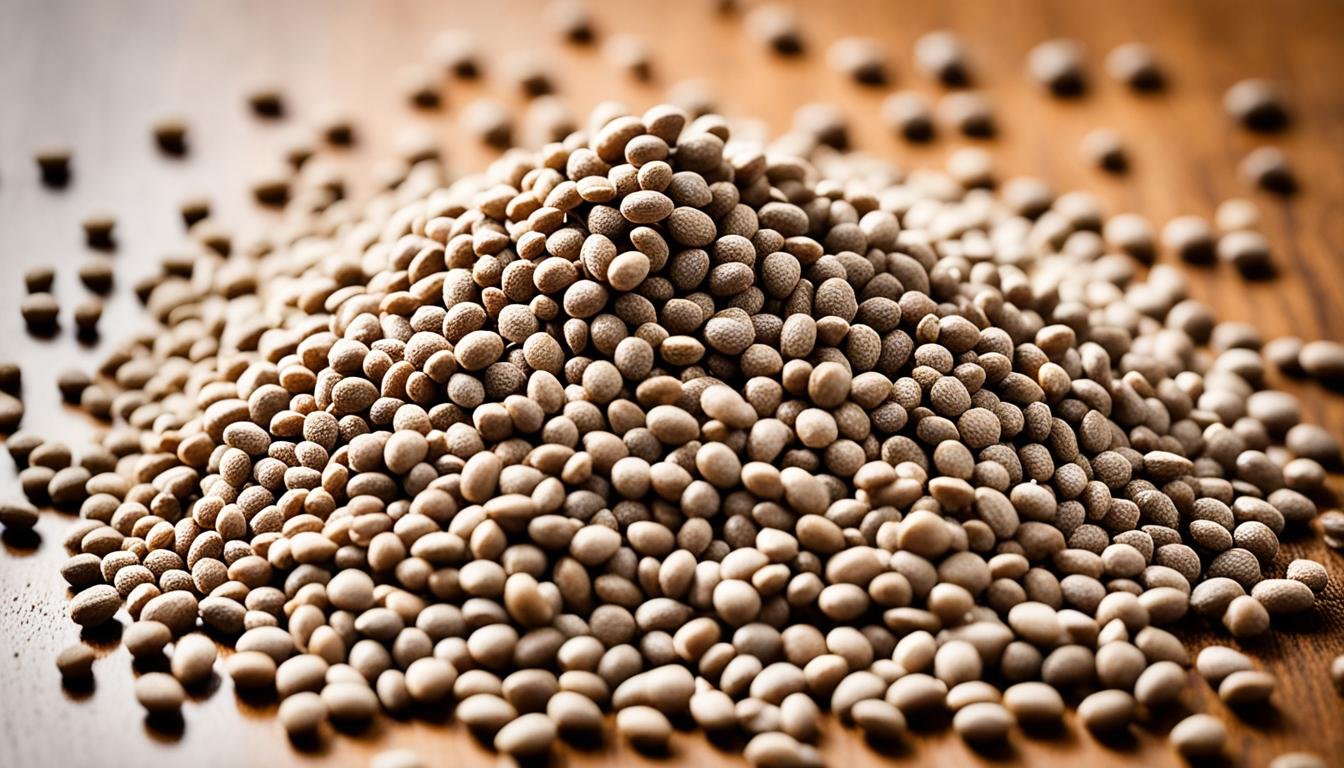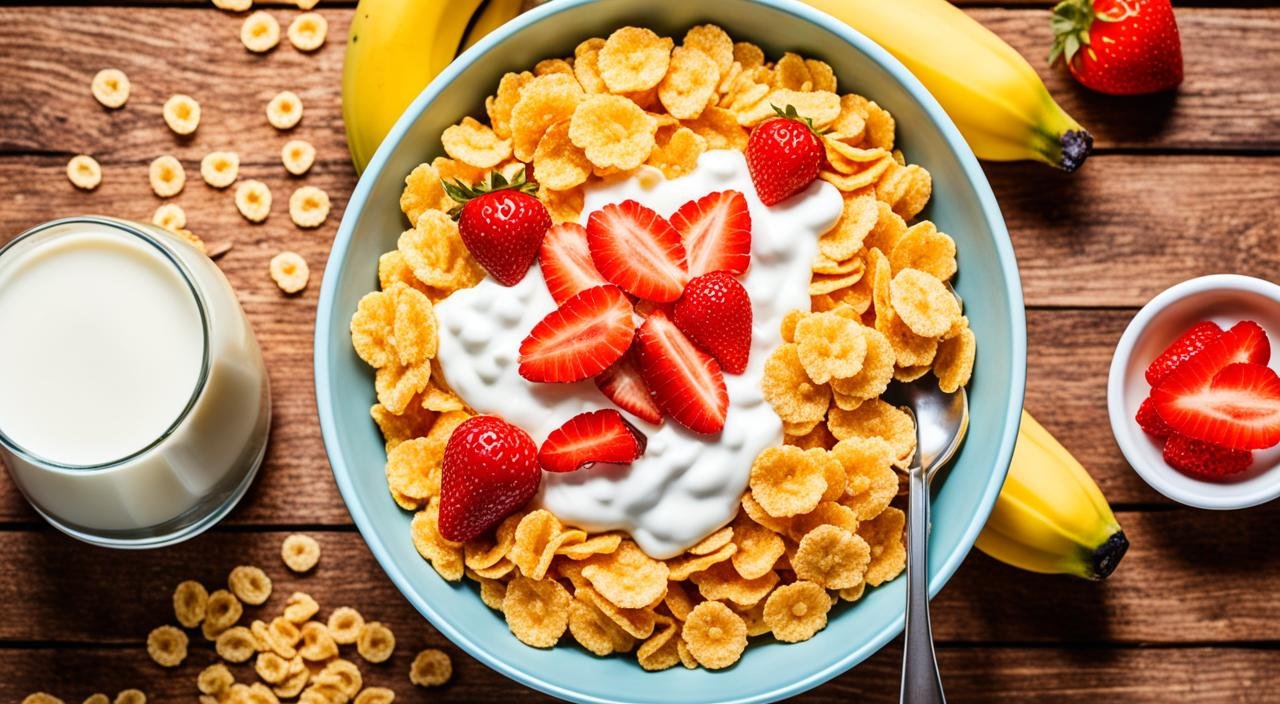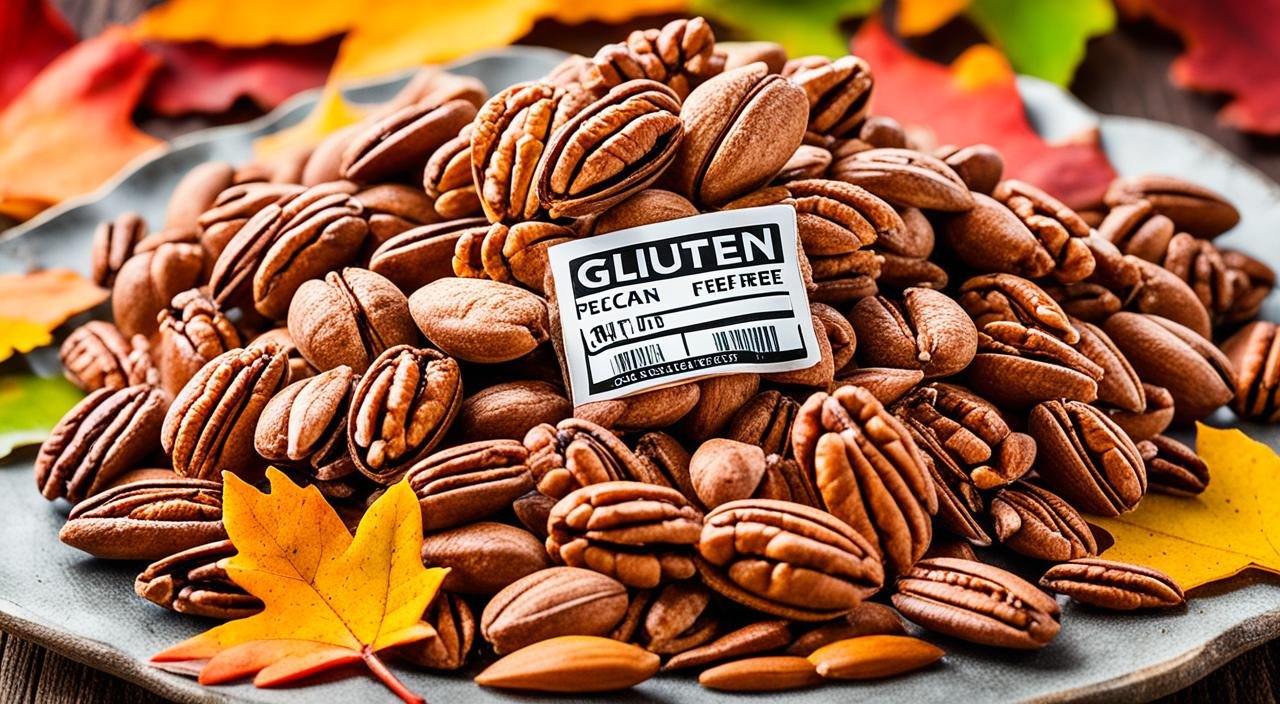Many think buckwheat is free from gluten, but is this really the case? We’re diving into the world of grains that don’t contain gluten. The facts around buckwheat and gluten may be more interesting than you expect. Let’s break down what’s true and what’s not about this unique grain.
Key Takeaways
- Buckwheat is a naturally gluten-free pseudocereal, making it a suitable option for individuals with celiac disease or gluten sensitivity.
- There are two main types of buckwheat flour – light and dark – with varying flavors, textures, and fiber content.
- Certified gluten-free buckwheat products must contain less than 20 parts per million (ppm) of gluten, with some certifications having even stricter requirements.
- Buckwheat is a nutritional powerhouse, offering dietary fiber, protein, essential vitamins, minerals, and antioxidants.
- Incorporating buckwheat into your diet can be done in various ways, from pancakes and porridge to baked goods and grain bowls.
What is Buckwheat?
Buckwheat is a pseudocereal, not a true grain. It comes from a flowering plant family that includes sorrel and rhubarb. This plant is grown for its dark brown, triangular seeds. It has been a vital crop in places with short growing seasons. These places include Tibet, northern China, Korea, Japan, and Eastern Europe.
Not a True Grain
Even though buckwheat looks and acts like a grain, it’s not a true cereal grain. It belongs to the Polygonaceae family, which is also home to sorrel and rhubarb.
Pseudocereal Related to Leafy Vegetables
Buckwheat is grown for its seeds, just like real grains. But it’s really a part of the same family as many leafy green vegetables. It’s not in the grass family that other grains come from.
Cultivated for Grain-like Seeds
The buckwheat plant gives us small, triangular seeds that look like grains. These seeds are the main reason the plant is grown and used. They allow buckwheat to be used in ways we use other cereal grains.
Is Buckwheat Gluten Free
Buckwheat is naturally gluten-free. It is safe for those with celiac disease or sensitivity to gluten. Unlike wheat, barley, and rye, buckwheat comes from a different plant family. This means it is free of the gluten protein that can be bad. Another grain you might like is bulgur. Some people eat buckwheat as a snack.
Buckwheat stands out from other grains because it doesn’t have gluten. This makes it a great choice for a gluten-free diet. Anyone who must avoid gluten, like people with celiac disease or non-celiac gluten sensitivity, can eat it.
Even though buckwheat doesn’t have gluten, there is a chance it could touch gluten during making. It’s smart to choose products marked as “gluten-free.” Or pick ones with a seal from groups like the National Celiac Association or GFCO. This shows the product is really safe.
| Nutrient | Amount per 100g |
|---|---|
| Calories | 343 |
| Protein | 13.3g |
| Carbohydrates | 71.5g |
| Fat | 3.5g |
| Fiber | 10g |
| Sugar | 0g |
Knowing that buckwheat is gluten-free is key. And being careful about where you get it is important. By being cautious, people on a gluten-free diet can enjoy adding this nutritious grain to their meals.
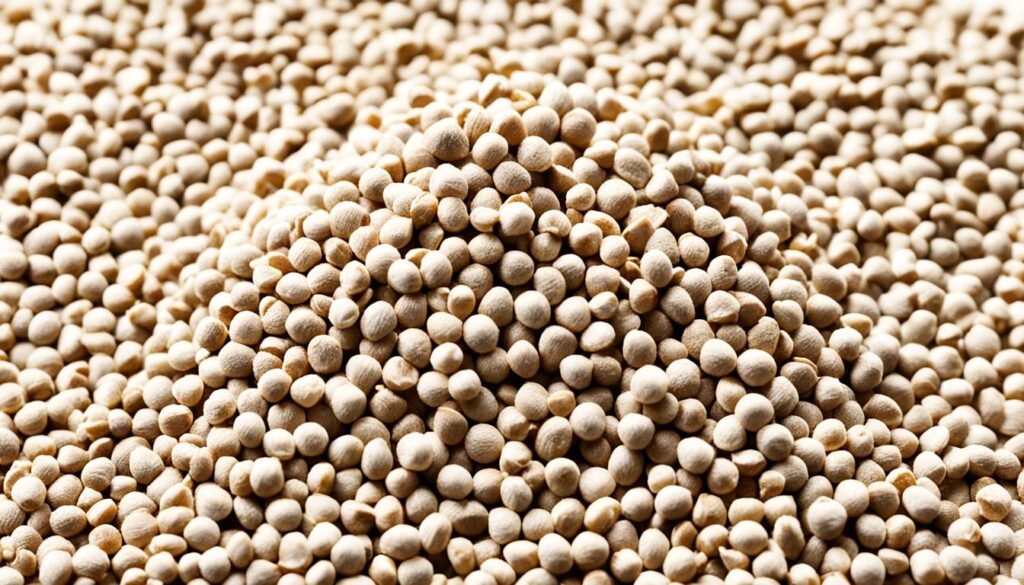
Types of Buckwheat Flour
There are two main types of buckwheat flour: light and dark. Each type is distinguished by how it is processed and the flavors it offers.
Light Buckwheat Flour
Light buckwheat flour comes from buckwheat without its husks. This makes the flour light in color and with a mild taste. It is great for gluten-free baking.
Dark Buckwheat Flour
Dark buckwheat flour is made with the husks. It has a strong, earthy taste and is a bit rougher. People like it for its rich, nutty flavor in various gluten-free foods and treats.
Both light and dark buckwheat flours work well for gluten-free baking. They bring distinct tastes to the table. Your choice depends on what flavors you prefer and the recipe you’re making.
Cross-Contact and Certifications
Buckwheat is gluten-free by nature, but it could get mixed with grains like wheat. This mixing makes it risky for people with celiac disease. They need to choose products marked as gluten-free or certified gluten-free.
Gluten-Free Labeling Requirements
The FDA states that “gluten-free” food must have under 20 parts per million (ppm) of gluten. This rule makes it easier for people with celiac or those on gluten-free diets to select safe foods.
Certified Gluten-Free Standards
Some groups like the National Celiac Association and GFCO follow stricter rules. They say products must contain less than 5-10 ppm of gluten. For many, this is needed to feel confident about avoiding buckwheat cross-contact.
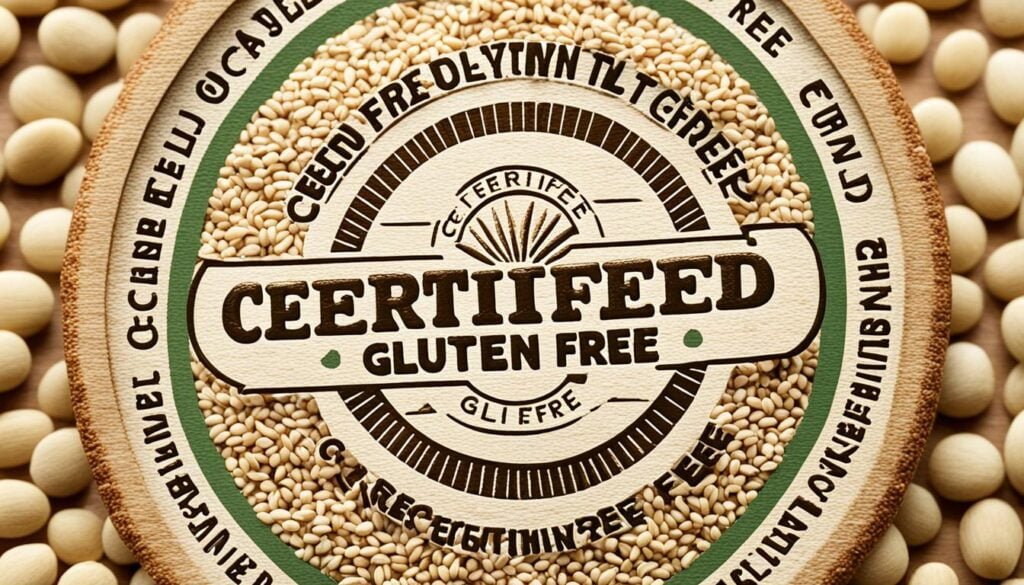
Nutritional Benefits of Buckwheat
Buckwheat is a superfood. It’s not just for people who avoid gluten. It’s full of dietary fiber. This fiber is great for digestion and keeping your heart healthy. It also makes you feel full. Plus, it’s loaded with protein, perfect for both vegetarians and vegans.
Rich in Dietary Fiber
100 grams of raw buckwheat has 10 grams of fiber. It’s great for your colon and helps control blood sugar. Thank soluble carbs and resistant starch for that.
Protein-Packed
Boiled buckwheat groats aren’t super high in protein at 3.4%. But it gives you important amino acids. These amino acids help keep your heart healthy and lower your colon cancer risk.
Essential Vitamins and Minerals
Buckwheat is full of vital vitamins and minerals. It has a wealth of B vitamins, as well as magnesium, manganese, phosphorus, and iron. This makes it stand out among grains.
Antioxidant Properties
Buckwheat is full of antioxidant compounds. These include rutin, quercetin, vitexin, and D-chiro-inositol. You get more antioxidants than in most cereals. Rutin is especially powerful. It fights oxidation, reduces inflammation, and might help prevent cancer.
With its many nutrients, buckwheat is clearly good for you. Its buckwheat fiber, buckwheat protein, buckwheat vitamins, and buckwheat antioxidants mean serious business. It’s a top choice for anyone wanting to eat healthier.
Incorporating Buckwheat into Your Diet
Buckwheat is an amazing part of a complete, gluten-free diet. We can eat it in many tasty ways. This includes light and fluffy buckwheat pancakes and rich buckwheat risotto. Buckwheat flour is a great gluten-free alternative in baking, for things like bread and cookies. This lets us try out new tastes.
A meal with buckwheat groats is both filling and good for you. Add them to grain bowls, stir-fries, or as a dish on their own. Buckwheat has a nutty, earthy flavor that goes well with many things. In Japanese food, there’s soba noodles, which are gluten-free and make a tasty pasta.
Curious to know how to make an Easy Gluten Free Communion Bread. We have got you covered in our Recipe.
If we want to try more gluten-free options or just different grains, buckwheat is a good choice. It adds a special taste to our meals and cooking. With its unique flavor and many ways to use it, buckwheat is a great addition. It helps us make meals that are both tasty and meet different dietary needs.
I’m Dr. Shivani, a Kolkata-based nutritionist since 2015. After 10 years of igniting a love for healthy eating in young minds as a High School nutritionist teacher, I now help individuals unlock their full potential through personalized diet plans. My passion for writing and sharing nutrition knowledge (through blogs and observations) keeps my practice fresh and fuels my love for the field!

